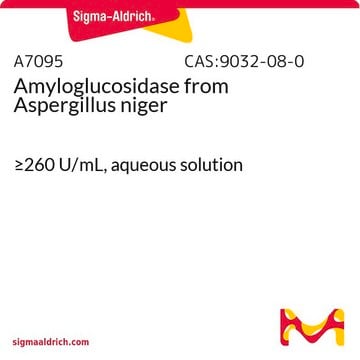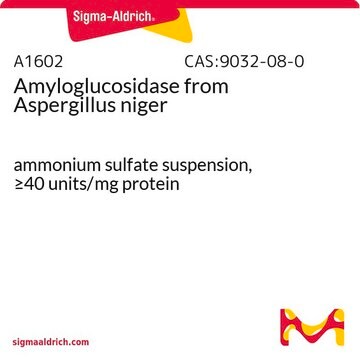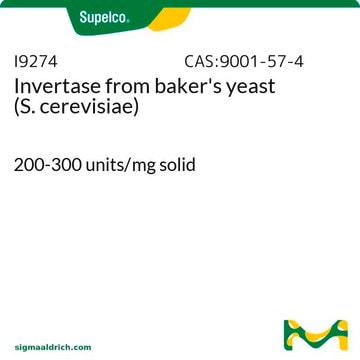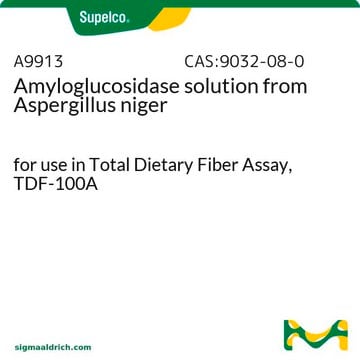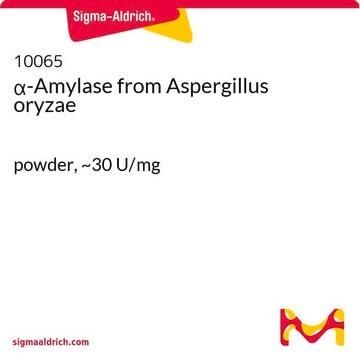ROAMYGLL
Roche
Amyloglucosidase
from Aspergillus niger
Synonyme(s) :
Aspergillus niger, disaccharidase-type a-glucosidase
Sélectionner une taille de conditionnement
146,00 €
Sélectionner une taille de conditionnement
About This Item
146,00 €
Produits recommandés
Source biologique
Aspergillus niger
Niveau de qualité
Forme
lyophilized
Activité spécifique
6 U/mg (approximately 6 U/mg lyophilizate at +25°C with glycogen as the substrate)
~6 units/mg protein (At 25 °C with glycogen as the substrate.)
Poids mol.
97 kDa
Conditionnement
pkg of 3,500 U (11202367001)
pkg of 500 U (11202332001)
Fabricant/nom de marque
Roche
pH optimal
4.6-4.8
Température de stockage
2-8°C
Catégories apparentées
Description générale
Spécificité
Application
Actions biochimiques/physiologiques
Notes préparatoires
The following concentrations should be taken as a guideline:
- Western blot: 1 to 10 μg/ml
Working solution: Tris-buffered saline containing 0.1% Tween 20.
Storage conditions (working solution): 2 to 8 °C
Autres remarques
Mention d'avertissement
Danger
Mentions de danger
Conseils de prudence
Classification des risques
Resp. Sens. 1
Code de la classe de stockage
11 - Combustible Solids
Classe de danger pour l'eau (WGK)
WGK 1
Point d'éclair (°F)
does not flash
Point d'éclair (°C)
does not flash
Faites votre choix parmi les versions les plus récentes :
Déjà en possession de ce produit ?
Retrouvez la documentation relative aux produits que vous avez récemment achetés dans la Bibliothèque de documents.
Les clients ont également consulté
Notre équipe de scientifiques dispose d'une expérience dans tous les secteurs de la recherche, notamment en sciences de la vie, science des matériaux, synthèse chimique, chromatographie, analyse et dans de nombreux autres domaines..
Contacter notre Service technique
